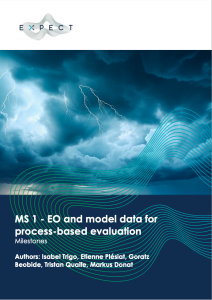Authors: Isabel Trigo, Etienne Plésiat, Goratz Beobide, Tristan Quaife, Markus Donat
Abstract
Land surface processes controlling the exchange of water, energy and carbon at the land-atmosphere interface are relevant at diverse spatial and temporal scales, contributing to, e.g., amplify or damp air temperature anomalies, or precipitation recycling. Similarly, ocean surface and subsurface processes interact with the atmosphere, leading to changes in temperature and precipitation over land. However, their representation in the Earth System Models make use of parameterizations or simplified conceptual schemes that may lead to significant deviations in simulations of energy and water fluxes over land surfaces.
Here, we identify relevant data derived from in-situ and satellite Earth Observations, ocean subsurface profiles and climate models covering variables intrinsically linked to physical processes in the land-atmosphere and ocean-atmosphere interfaces – see section 2. Section 3 refers to different approaches that make use of these datasets for process-based evaluation. This document also identifies recent works that highlight the challenges and propose methodologies for the study and assessment of land- atmosphere and ocean-atmosphere interactions using observations and model data (section 3).
